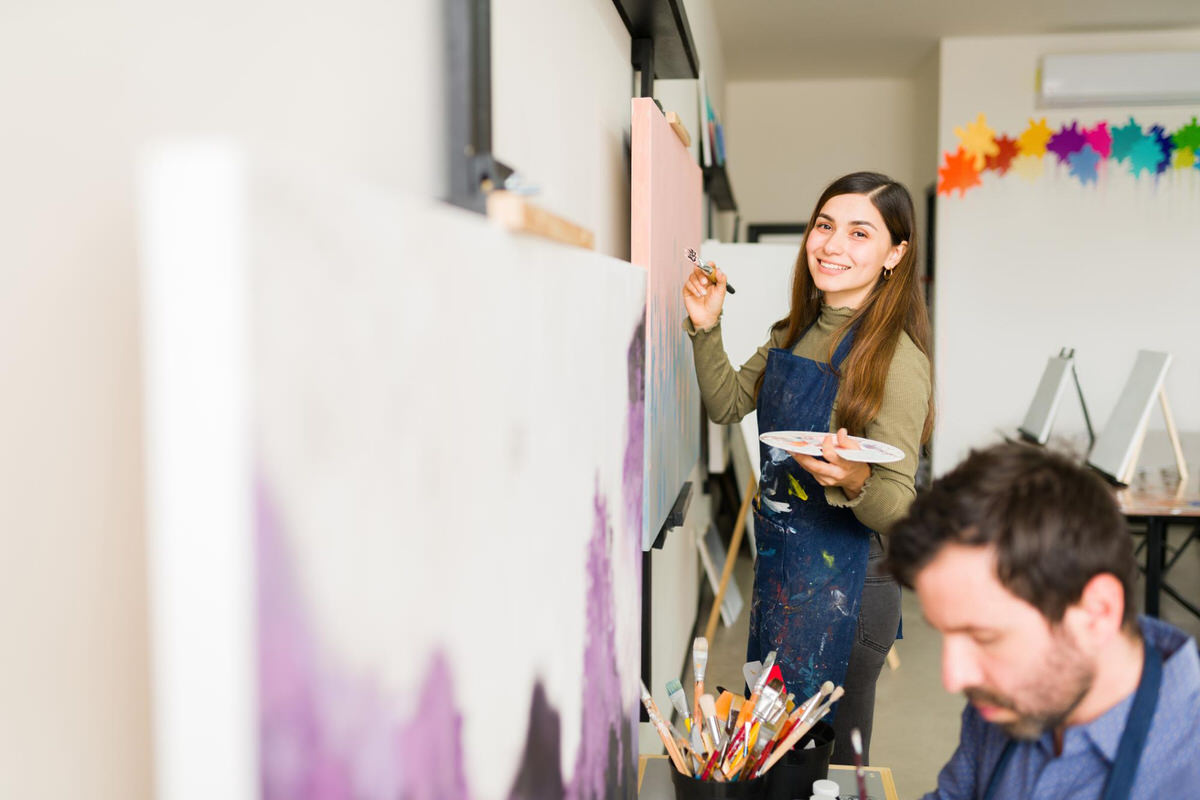Dealing with anxiety can be a different experience for each person. Amongst the various coping mechanisms, art therapy can be a means to express your innermost thoughts and emotions visually. Those who struggle to verbalize their worries can find it easier to follow art therapy. You don’t need experience or need to have artistic abilities to benefit from art therapy. Stay in the moment and explore different creative ways to find the one that works for you. There’s no rule, but seeking professional help is better if you feel overwhelmed.
Have you ever felt your palms are sweaty and you’re constantly tapping your foot or shaking your hands and feeling out of breath?
This is a sign of anxiety, which usually happens before many significant things you have to go through.
While stuff like giving a presentation, getting ready for an exam, and going through a new situation out of your comfort zone can all be challenging, that might give you a feeling of anxiety.
On the other hand, if you feel this fear, dread, and uneasiness needlessly and out of nowhere, then it might be an anxiety disorder.
When it disrupts your day-to-day life, you need to seek professional help.
Art therapy is one of the ways that can help you regulate your emotions and feelings and help you navigate your life without going through needless anxiety.
Let’s take a look at how art therapy can help your anxiety!
Coping with Anxiety
When your feelings of worry exceed a limit, disrupt your daily life, and make it abnormally tricky to do even simple tasks, you need professional help. This is termed Generalized Anxiety Disorder and can occur at any age.
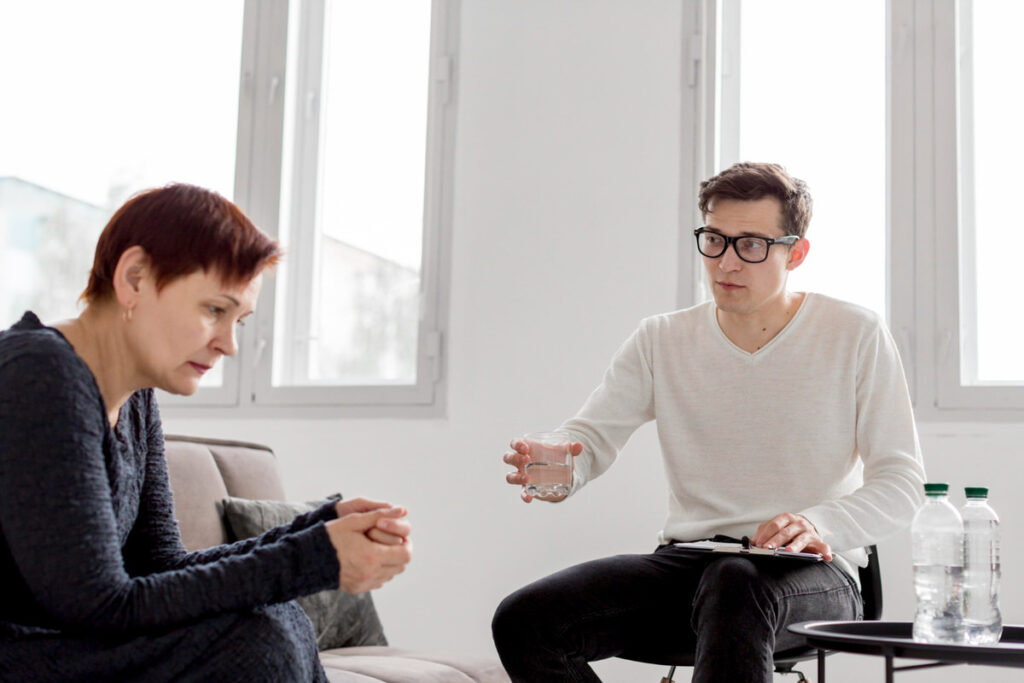
It can be a different experience for each person. One might show severe anxiety symptoms such as sweating, shaky hands or legs, shortness of breath, and physical weakness.
But people might also initiate coping mechanisms internalized through poor concentration, poor memory, and avoidance behavior.
Generalized anxiety is just one subtype, as others include:
- Agoraphobia
- Anxiety disorder due to another medical condition
- Other specified anxiety disorder
- Panic disorder
- Selective mutism
- Separation anxiety disorder
- Social anxiety disorder
- Specific phobia
- Substance/medication-induced anxiety disorder
There are different ways people deal with their anxiety. Some find it better to journal their journey and be mindful of every day while going through what triggers them and working on it accordingly.
Some people find it better to focus on exercising, doing aromatherapy, taking medications, and concentrating on their diet.
Then again, combining all these things is a much better approach for most people.
Combining things and techniques and seeing what works best for you is probably the way to deal with your anxiety issues.
What is art therapy?
An artistic approach to dealing with your anxiety can suit you but might not work for others.
Initially, you might wonder if this artistic approach will work, but it can be therapeutic and cathartic.
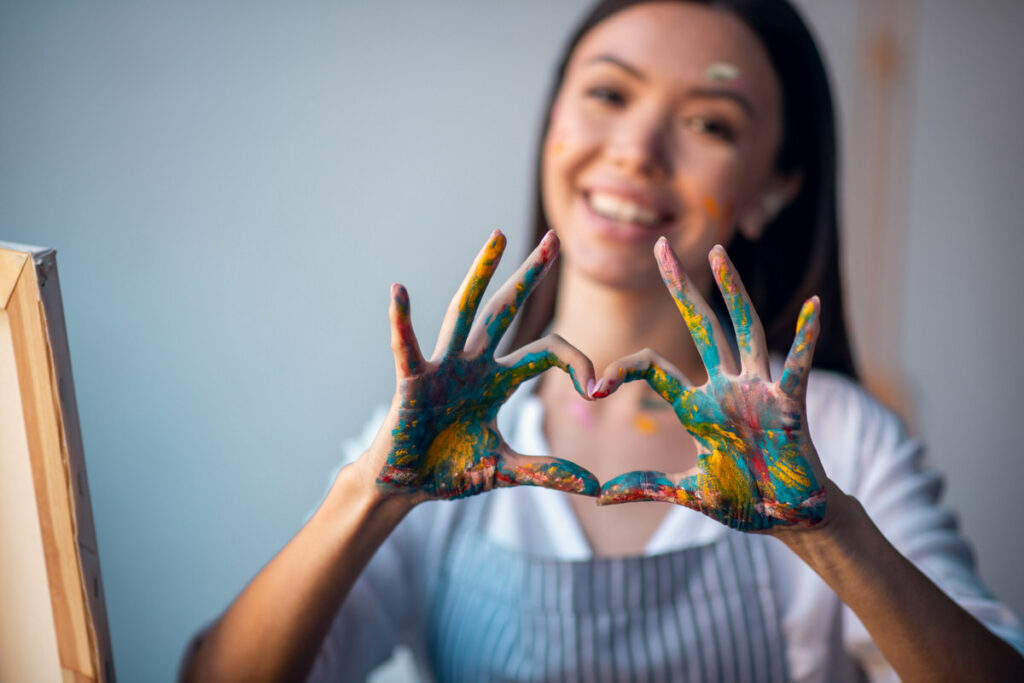
The American Art Therapy Association (AATA) defines art therapy as an integrative mental health and human services profession that enriches the lives of individuals, families, and communities through active art-making, creative process, applied psychological theory, and human experience within a psychotherapeutic relationship.
Art therapy doesn’t need to be as strict as oil or water painting on a canvas but could be as simple as doodling on plain paper.
Other art forms include clay modeling and sculpting, which can help reduce stress.
Through art therapy, a person filled with anxiety and experiencing it daily will be able to express their emotions even though they don’t know much about it.
Different research shows that when a person engages in art-making, it helps their neurological system relax. Their brain chemical levels will decrease and bring relaxation.
Anyone can experiment with art therapy and seek help from licensed and credentialed mental health professionals to see how it can work for them.
Effectiveness of art therapy
- Improved cognition
- Improved sensory motor function
- Cultivated emotional resilience
- Fostering self-awareness
- Fostering self-esteem
- Promoting Self-esteem
- Promoting Insight
- Enhancing social skills
- Reducing conflict
How does art therapy help anxiety?
Just like with other coping mechanisms that help you feel grounded and centered while taking away your worries, art therapy helps free yourself from needless concerns.
This persistent worry can be helped as a person practices some form of art therapy.
It allows them to express themselves and distracts them from the concerns and fears that envelop them.
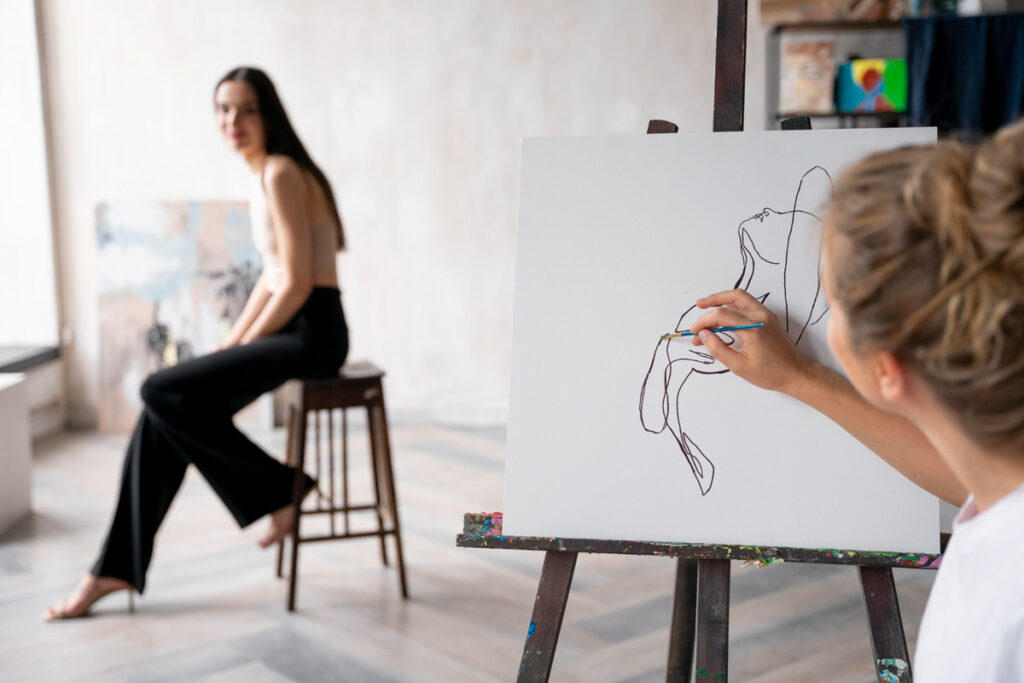
For those who find it challenging to keep a journal and track their everyday life, art therapy can be something where they don’t necessarily need to verbalize their emotions or write them down but express them in the form of their chosen art.
Some people also find it helpful to feel calm from the textures and materials of art supplies or paints.
Sculpting or clay modeling can be very sensory pleasing.
According to a Dutch study, art therapy has benefits such as:
- Reduction in anxiety symptoms
- Increase in subjective quality of life
- Improvement in the accessibility of emotion regulation strategies
- Long-term effects that are present during a 3-month follow-up
Doing some form of art therapy can help you become more mindful of yourself, including keeping a tab on your thoughts, emotions, and sensations while helping in anxiety reduction.
Instead of sitting and overthinking to the point of feeling your worst self about yourself, this distraction is a visual expression of your worries and emotions.
The worst kind of worry is when you keep thinking about one thing, but practicing some art takes your focus away from those worries and helps you focus on the task at hand.
How can I start art therapy?
It can be overwhelming for someone who hasn’t touched a coloring book in a long time to know where to start and how to discover art therapy.
The first thing to do about it is not overthink how, when, and where to start.
The best way is to start simple, and gradually, you’ll be able to discover which art therapy activity suits your taste and is better for your self-expression.
1. Coloring
The most basic way to start exploring is to buy a coloring book, some coloring pencils, crayons, sketch pens, or whatever suits your taste.
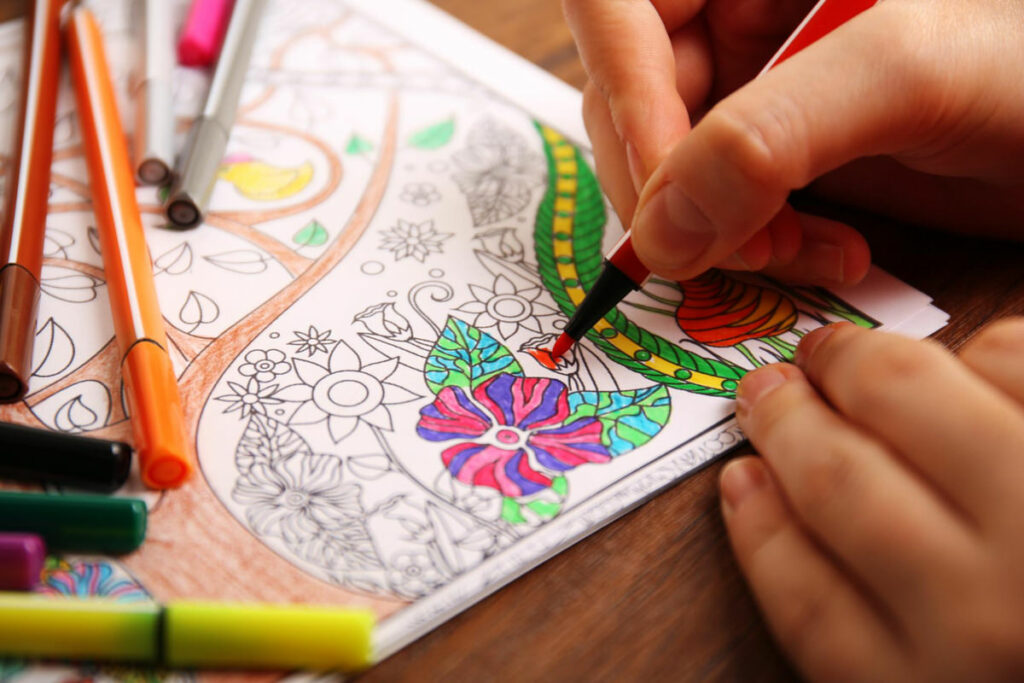
Even if you don’t want to or wish to buy a coloring book, you can print some pages of your favorite things and color them or draw something you can color in later.
There are adult coloring books in the store and online that you can invest in.
The most popular ones are the mandala art coloring books, made explicitly with intrinsic and complicated designs, so you have a lot of ground to cover in one page.
Talking from my experience of owning a mandala art coloring book, I’ve had a much better experience of using it to express my frustrations.
This book came to my rescue, especially during the pandemic, when we couldn’t do much and had to find ways to let off steam while staying at home.
I won’t say it’s a magical way of making your stress and needless worries disappear.
But when you try to focus on coloring the intrinsic designs, the only thing you focus on is the art you’re making.
Apart from focusing on it, you also tend to realize how in control it makes you feel.
The mandala, a Buddhist symbol representing the universe, is a circular geometric design widely used in meditation.
2. Doodling
As a child, we all make silly little things in our notebooks, be it little hearts, a cartoon we liked, or even writing our crush’s name on the corner of the page.
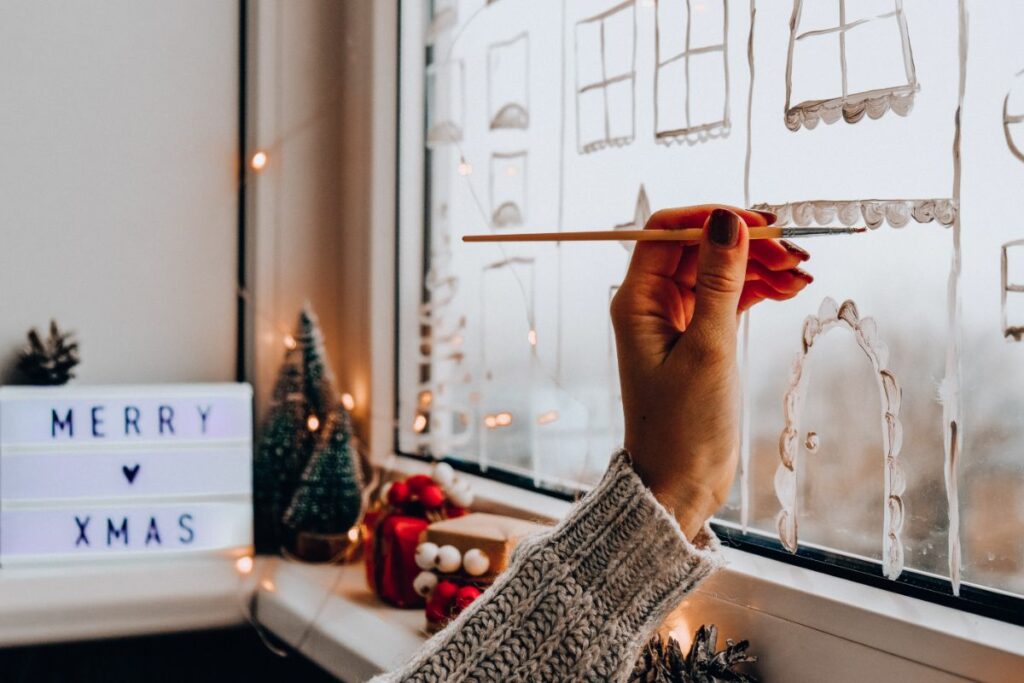
This is doodling, which you can explore even at this age. The best part is that you don’t need any fancy equipment, and just a pen/pencil on paper will do the trick.
Let your intuition guide you; you can do whatever you wish without thinking twice about it.
It can be a pattern or random things on paper, but it will ultimately help you express your emotions that you haven’t been able to verbalize.
3. Drawing or sketching
Some artistic people might wish to go with drawing out certain things such as buildings, scenic views such as a park, or even their favorite cartoon or anime characters.
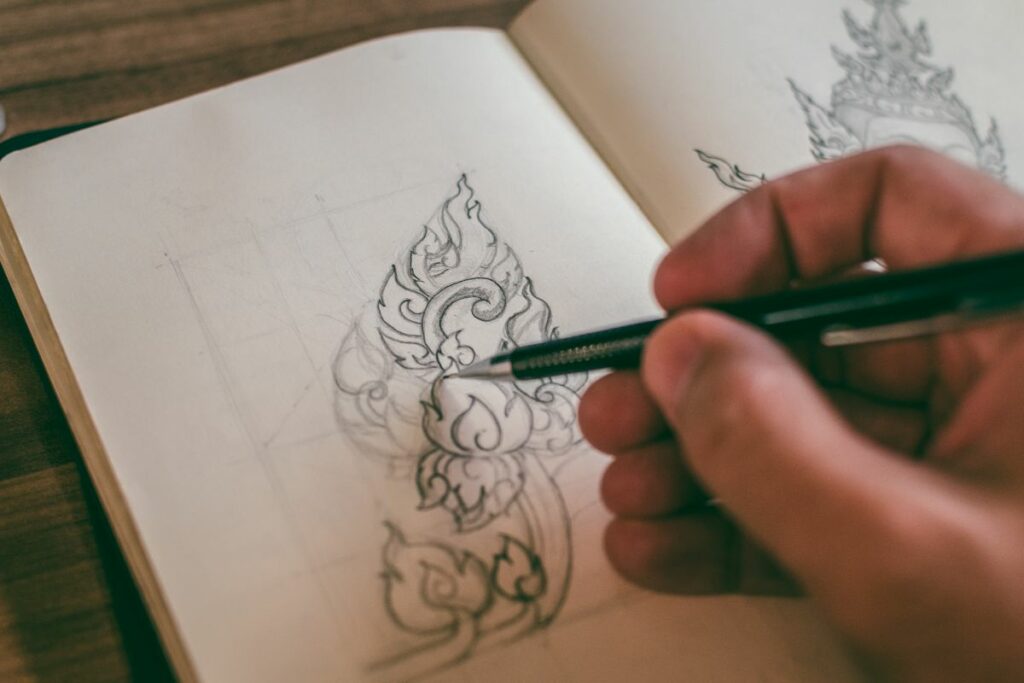
You can draw on a napkin, a piece of random paper set to be thrown out in the garbage, a beautiful sketchbook, or a canvas.
While these are some basic techniques that can get you started in the world of art therapy, there exist other art therapy exercises, such as:
- Collage
- Coloring
- Doodling and scribbling
- Drawing
- Finger painting
- Painting
- Photography
- Sculpting
- Working with clay
You can start doing it in your room, but if you wish to seek a more professional way of following art therapy, you can always seek a trained professional.
Tips for art therapy
You don’t need to be an expert, but you can start from scratch and work with a combination of factors to see what works best for you while continuing art therapy.
Staying in the moment is one of the things that could help you. Try sitting in a place that is free of distractions and quiet. You could start with 10-15 minutes of working on it daily.
Some light music could be helpful, but it could be troublesome if you try something that takes too much of your attention, like watching TV.
Another thing to keep in mind is that you don’t need to be perfect at it. You can be messy, and even if you don’t like it initially, it’s better to experiment with a combination of different art forms.
What you need to avoid doing is:
- Going back and erasing anything
- Wondering whether your drawing is good or bad and hesitating
- Worrying the proportions are off or bad
- Getting stuck on making things perfect or accurate
It would be best if you took the time to let things work out and let them take their own course.
Artistic exercises can help you eliminate your negative feelings and focus more on positive emotions. Starting with what you know is a good sign, as you can explore the intricacies later.
I hope this insight into art therapy has been enlightening for you.
While art offers a therapeutic avenue, it’s not a substitute for professional care.
If you’re ever in doubt, seeking a mental health professional’s advice is paramount.
FAQs
What are the 5 techniques used for coping with anxiety?
– Exercise regularly
– Eating balanced meals
– Get good sleep
– Limit your alcohol and smoking sessions
– Take deep breaths or meditate
What kind of art helps mental health?
Expressive arts can be good for your brain and mental health. It can be visual arts, movement, drama, music, writing, or something you find entertaining.
This helps you relax, express deeper emotions, and focus on art rather than worry about other stuff.
What are the risks of art therapy?
Sometimes, when we have deeper emotions we don’t know about, it might come out in art.
We might end up expressing our negative emotions and accidentally creating art showcasing darker emotions we are not ready to deal with.
This is why doing it with the help of a professional is a much better choice; otherwise, it could be risky sometimes.
References
- https://www.healthline.com/health/mental-health/how-to-cope-with-anxiety
- https://www.mayoclinic.org/diseases-conditions/social-anxiety-disorder/symptoms-causes/syc-20353561
- https://www.healthline.com/health/breathing-exercises-for-anxiety
- https://medlineplus.gov/anxiety.html
- https://www.alternativetomeds.com/blog/art-therapy-ideas/
- https://www.ncbi.nlm.nih.gov/pmc/articles/PMC6549595/
- https://www.therapistaid.com/therapy-worksheet/mandalas
- https://www.tandfonline.com/doi/full/10.1080/07421656.2021.2003144
- https://uplift.love/neurosculpting-for-anxiety/

